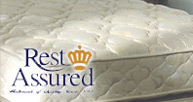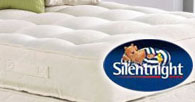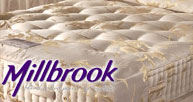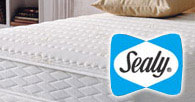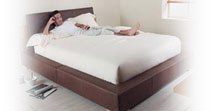 |
|
 |
Latex is made of natural fillings. It offers durability, resilience and improved hygiene to give the ultimate combination of comfort and support. The other striking feature of these mattresses is that they are temperature sensitive. Thus as the temperature rises the mattress will allow you to sink more into it. Therefore as you fall into a deeper sleep and your body temperature increases you sink more into the mattress, feeling a greater level of comfort. The feature that makes latex the ultimate choice is that these mattresses meld to the body reducing the amount you twist and turn each night providing restful sleep. |
 |
|

|
Wool has slightly less resilience than horsehair, but its advantage is its softness. Once again it is an expensive commodity but it also helps the sleeper to keep warm in the winter and cool in the summer. |
 |
|
 |
Polyester is a non-allergenic filling used as a comfort layer, giving high loft. This hollow fibre product has superior thermal properties, high bulk and softness, extending the filling’s potential usage. |
 |
|
 |
Cashmere is recognised as a luxury material however its unique qualities not only provide deeply luxurious comfort it helps provide warmth in the winter while remaining cool in the summer. |
 |
|
 |
Another natural fibre, cotton is used purely for its softness and ability to be treated for non-ignitability. |
 |
|
 |
Silk is a natural product, which gives a greater level of comfort and luxury. |
 |
|
 |
Horsehair is the most resilient of the natural fibres; its inherent springiness makes it ideal for bed upholstery as it recovers quickly from being compressed. It is however an extremely expensive commodity. |
Mattress covering material
Many mattresses are covered with a woven damask cloth as the outer covering, however this damask or ticking, as it is commonly known, is the primary layer of the upholstery, but its purpose is to enhance the look of the bed rather than to provide actual comfort. The appearance and the life of the bed is often enhanced by additional handcrafted features such as:
|
Hand Tufting
Where all the individual layers of upholstery are laid separately over the springs, then secured by inserting cords through the mattress, which are held in place by tufts on either side. The mattress is compressed during the tufting process so when released, the tufts remain under tension. This makes sure the layers of upholstery don’t move and that the mattress top is level.
|
Quilting
In this process, layers of upholstery, which includes foam, polyester and the damask, are quilted together into a pad which is laid over the springs and secured to them round the edges.
|
Hand Side Stitching
This is a procedure essential to ensure the integrity of the mattress spring system and should not be confused with the decorative type of sewing often found on cheaper mattresses. The object is to secure, without the use of metal rods or wire retaining strips, the first three rows of pocketed springs to the mattress border. This process also stiffens up the edge of the bed and allows comfortable sleep over the full mattress area.
|
Machine Side Stitching
In this process, layers of upholstery, and damask are machine stitched together giving improved support to the mattress side and a more appealing look.
|
Pocket Sprung Mattress
Pocket spring mattresses are made with individual spring units and are housed in fabric pockets which move independently from head to toe and from side to side. The more springs there are in a mattress, the more it is able to support the whole of your body giving firmness and support where you need it. This total flexibility allows the mattress to respond to your precise shape, weight and size. In addition this means that you and your partner can have the same level of independent support each of you need so there is no rolling off or rolling together. Silentnight’s ‘miracoil’ system is the same as this. When your partner moves around you tend to feel them less as the number of springs increase. Pocket spring mattresses are in many tensions so there is something suitable for every individual need.
|
Orthopaedic Mattresses
The general definition of an orthopaedic mattress it is a hard mattress and it must have a minimum spring gauge. It is however not always the case that a hard mattress is best for bad backs, and in some cases could make the problem even worse. In general an orthopaedic mattress is ideal for someone who prefers a firmer sleeping surface. |
